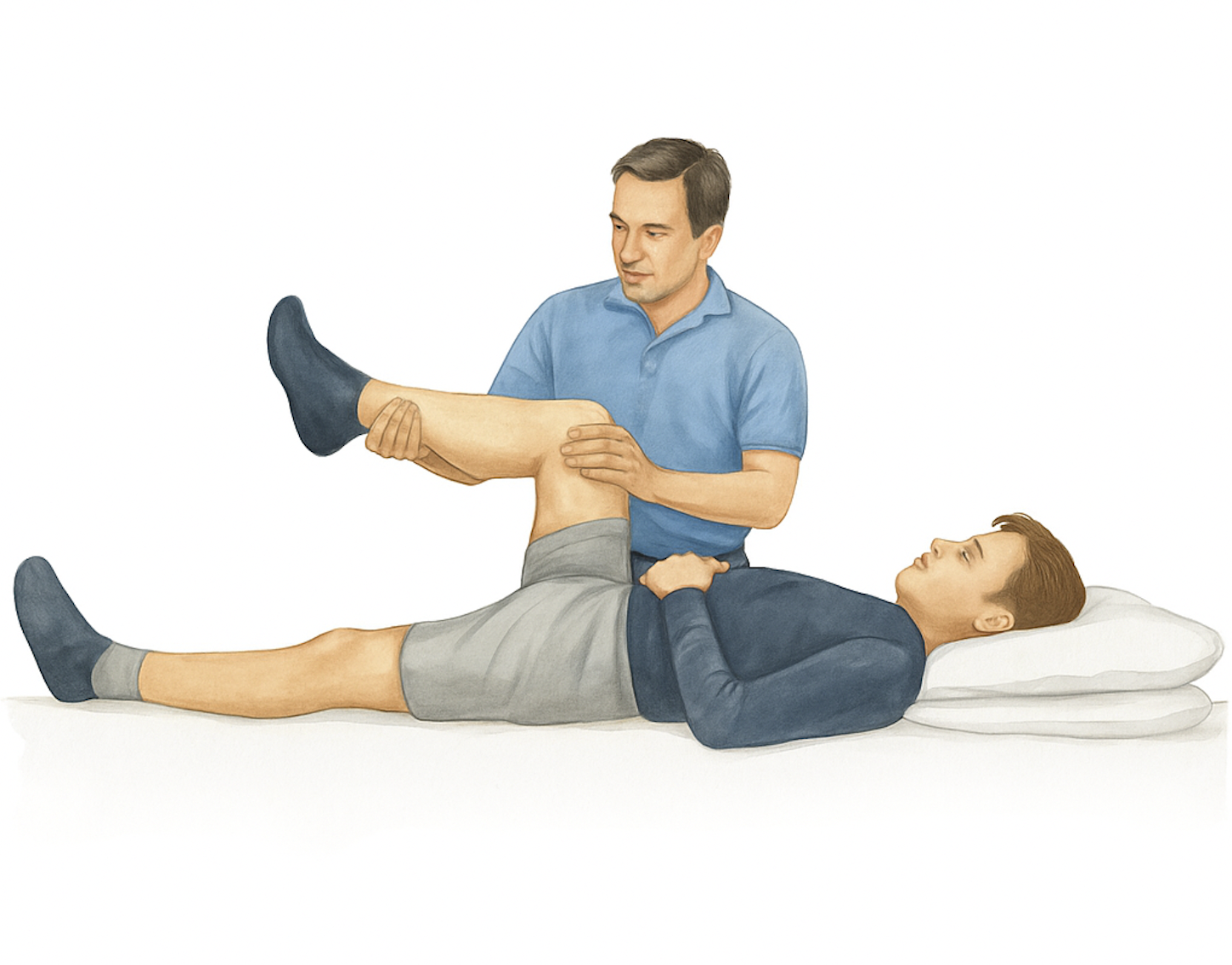Noble’s Test
Noble’s Test (also called the Noble Compression Test) is an orthopedic assessment used to evaluate for iliotibial band syndrome (ITBS), a common source of lateral knee pain in runners and cyclists. The test is designed to provoke symptoms by reproducing the friction or compression of the IT band over the lateral femoral epicondyle.
How the Test is Performed
-
Client position: Supine (lying on back).
-
The examiner flexes the client’s knee and hip to 90°.
-
The examiner applies firm pressure with the thumb or fingers over the lateral femoral epicondyle (just above the outside of the knee).
-
Maintaining this pressure, the examiner passively extends the knee (brings the leg toward straight).
-
Positive test: At around 30° of knee flexion, the client experiences localized pain or a palpable “snapping” under the examiner’s thumb/fingers, reproducing the client’s lateral knee pain.
-
Pain is typically most intense where the IT band crosses over the lateral femoral epicondyle.
-
-
The test can be compared to the unaffected side and may be combined with the Ober’s Test or Renne’s Creak Test for improved diagnostic accuracy.
Clinical Significance
-
A positive Noble’s Test is strongly suggestive of irritation, friction, or inflammation of the IT band at the lateral femoral condyle—classic for ITBS.
-
The test helps differentiate ITBS from other causes of lateral knee pain such as lateral meniscus tears or patellofemoral pain syndrome.
-
False positives can occur with other lateral knee pathologies, so use the test within a comprehensive assessment.
Assessment
-
Use for clients with lateral knee pain—especially runners, cyclists, or those with activity-related symptoms.
-
Document pain location, intensity, movement angle (noting if pain is worse near 30° flexion), and any palpable friction/clicking.
-
Combine with functional screening and other orthopedic tests (Ober’s, Renne’s) for thorough assessment.
Treatment
-
If positive:
-
Avoid aggressive deep friction or compressive manual therapy directly over the lateral femoral condyle and acutely symptomatic ITB.
-
Focus on gentle soft tissue release, myofascial techniques, upstream mobilization (hips, glutes), and functional movement retraining.
-
Educate clients on activity modification, ITB stretching, foam rolling, correction of biomechanical contributors (hip/foot strength), and anti-inflammatory strategies as appropriate.
-
-
Support gradual return to activity and monitor for recurrence, guiding safe progressions.
Safety and Referral
-
Refer for orthopedic or physical therapy evaluation if severe, persistent, or disabling lateral knee pain or if symptoms do not improve with conservative therapy.
-
Collaborate with other healthcare providers for interdisciplinary management of chronic or complex cases.

